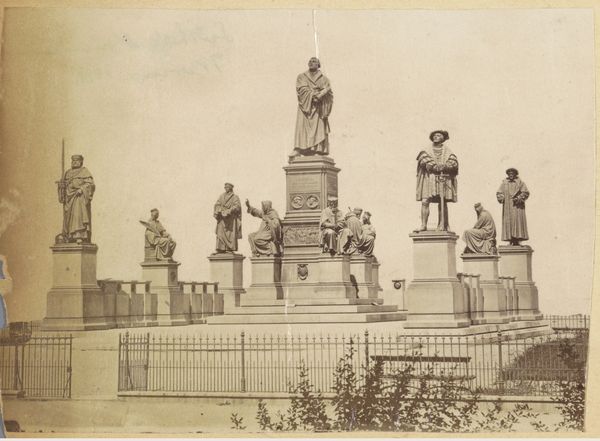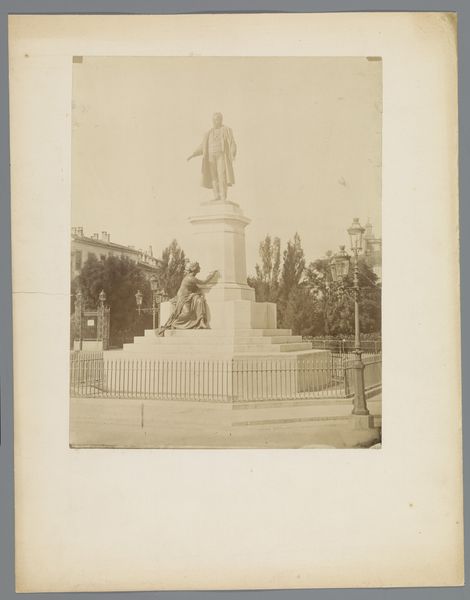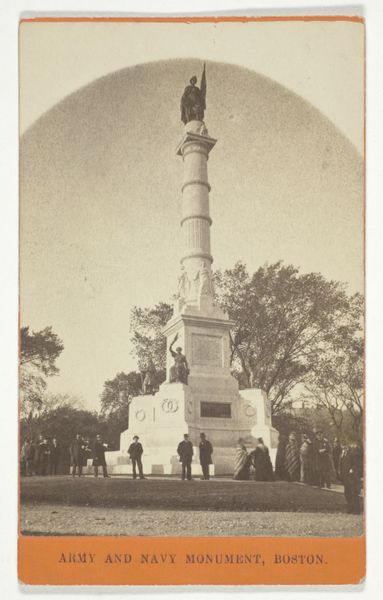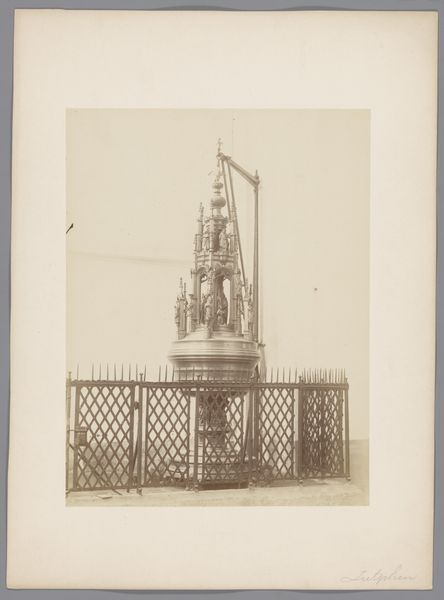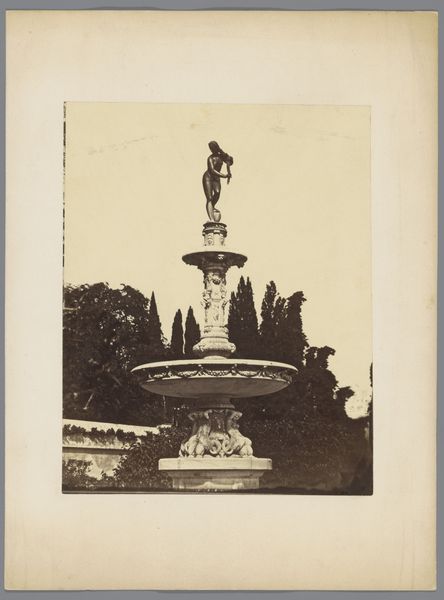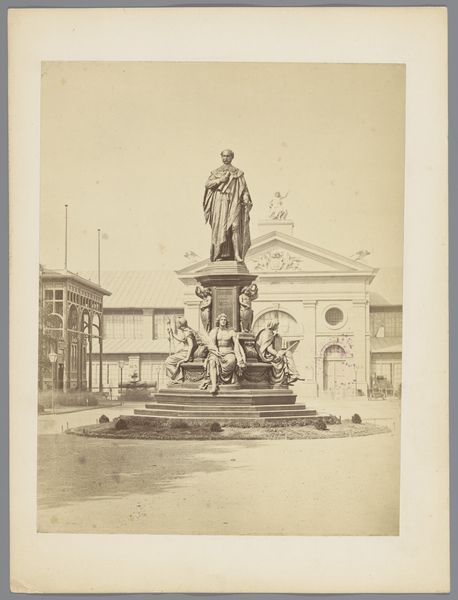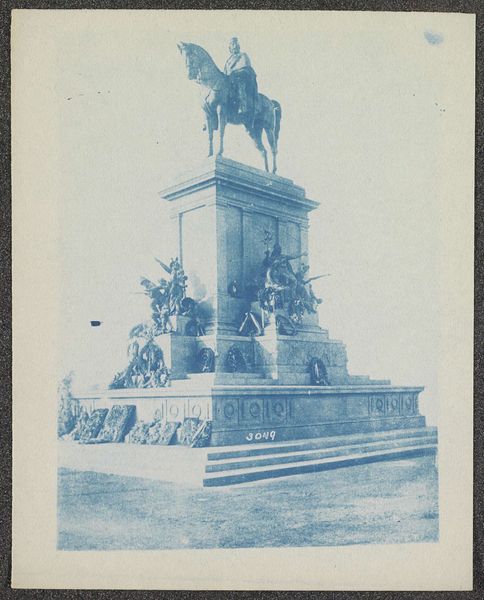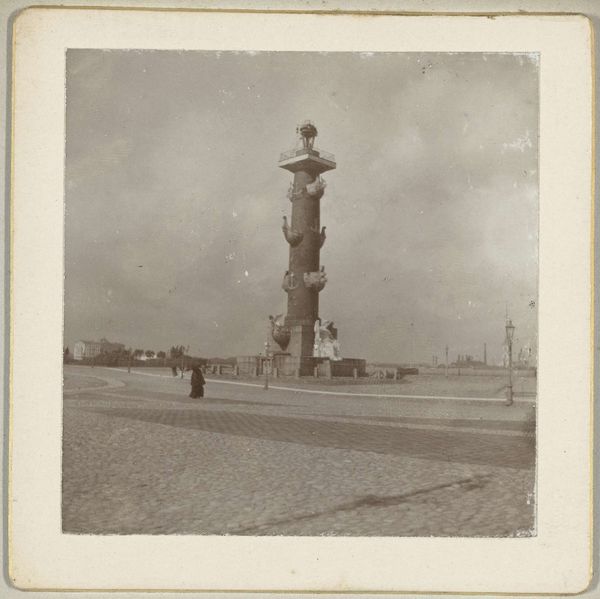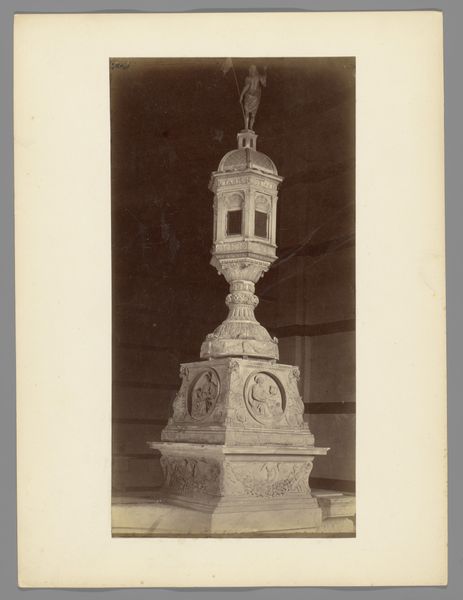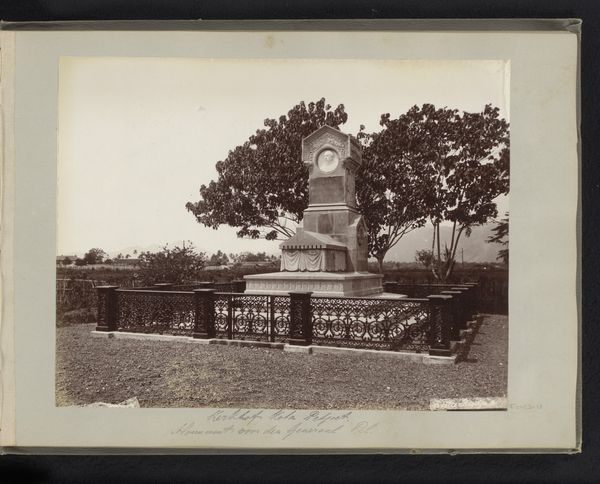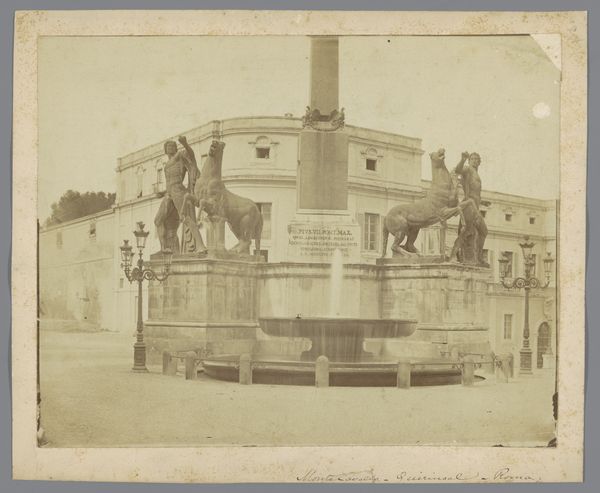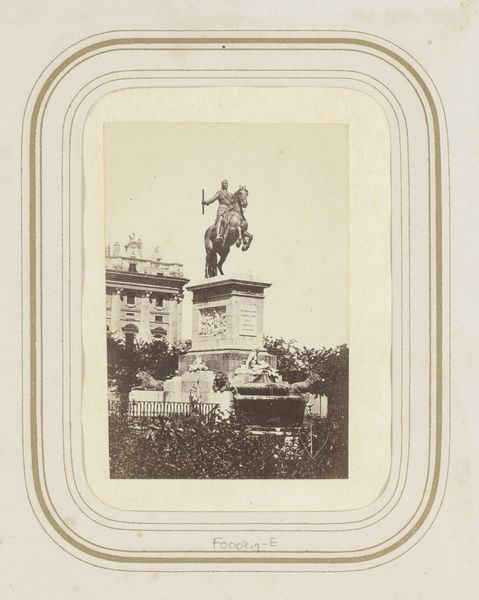
bronze, photography, sculpture
#
portrait
#
statue
#
bronze
#
photography
#
column
#
sculpture
#
19th century
#
history-painting
Dimensions: height 258 mm, width 197 mm
Copyright: Rijks Museum: Open Domain
Curator: Before us stands a photograph, dating from around 1875 to 1900, depicting the Monument to Admiral Wilhelm von Tegetthoff in Vienna, presumably captured by A.F. Ozihak. The bronze statue, set atop an elaborate column, dominates the scene. Editor: My first impression is one of stark grandeur. The monument's sheer verticality, accentuated by the photograph's perspective, is quite imposing. The figures at the base lend a sense of dynamic tension, frozen mid-gallop it seems. Curator: Indeed. The photograph itself is a study in contrasts, with the strong vertical lines of the column juxtaposed against the more horizontally oriented base and the cityscape visible in the background. Note the subtle gradations of light and shadow; the monochromatic palette further emphasizes the monumentality of the sculpture. Editor: This monument says so much about Austria’s self-image after a major turning point. The placement of Tegetthoff so prominently suggests the crucial role of military victories to the crumbling Habsburg empire’s legitimacy. Curator: Absolutely. Consider how this image likely functioned within Viennese society at the time. Public monuments like this were integral in shaping national identity, reinforcing shared narratives through visual symbols and idealized representations of national heroes like Admiral Tegetthoff. The monument's elaborate design – the column with its nautical flourishes, the powerful sculptural groupings – communicates a deliberate message of power, imperial reach, and enduring legacy. Editor: I'm struck by the somewhat dated nature of this particular type of war hero glorification, already somewhat behind the times, even back then. Note how that classicizing style harkens back to antiquity, consciously seeking to align Tegetthoff’s naval successes with the storied legacies of Roman or Greek generals. But also, the new media form – photography itself – suggests a slow turning away from established art styles. Curator: From a formalist perspective, this photographic document enables an almost hyper-real experience. Its tonality heightens a dramatic and sublime emotional response and reading from its public. Editor: It’s hard to ignore the complex history embedded within this image, a time when imperial aspirations clashed with nascent nationalisms and modernizing technologies forever changing warfare and its representation. Thanks for those thoughtful formal insights! Curator: Likewise!
Comments
No comments
Be the first to comment and join the conversation on the ultimate creative platform.
